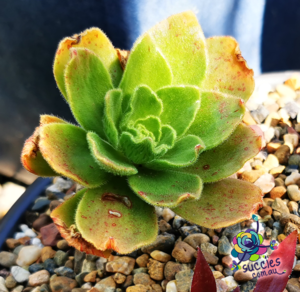
Aeonium Smithii (Smith’s Giant Houseleek)
Native to the Canary Islands (Tenerife), Aeonium Smithii is one surprising Aeonium. Generally speaking, a lot of Aeoniums tend to die after flowering (monocarpic) and

Succulent Varieties » Aeonium » About Aeoniums
Unlike other succulents that grow on a short stem and develop ‘pups’, Aeoniums grow more like a tree, developing their multiple rosettes from branches that are attached to the stem. They actively grow in winter and produce many offsets in a short space of time.
Fertilise early winter to encourage healthy growth and feed with seaweed solution regularly in their growing period. Do not fertilise in summer dormancy. I use Osmocote Cacti and Succulent fertiliser as it is specifically formulated for succulents or look for a fertiliser with a low nitrogen reading below 13.
I find my best Aeoniums are planted straight into the ground. The soil mix is 3 parts soil and 1 parts sand in most cases. Sources say that a sandy loam or even regular potting mix is better than a specially formulated cacti and succulent soil but I have found no issues with either option. The most important thing to remember is that the soil needs to drain reasonably fast. If your garden soil is more clay like, you will need to dig and repair this with sand and possibly perlite to ensure better drainage. I usually buy fresh garden soil and mix it as 3 parts soil 1 part sand and 1 part perlite and occasionally mix in few handfuls of mushroom compost to enrich the soil and mound this on top of the amended soil below. The same ratio can also be applied to potted Aeoniums.
It is best to leave your Aeoniums in their dormancy period (winter). I usually start a fresh pot only with stem cuttings in winter by cutting with a sterile knife or garden clippers and then allow them at least 1 week of callus time before potting them up.
Aeoniums are dormant in summer, they require little to no water at this time. However, if your area is experiencing very dry hot summers and your Aeoniums are exposed to the elements, it is best to water at least once a week to keep them from drying out too much. I water deeply at least once a week in winter and deeply once every 2 weeks in summer as Brisbane weather can be very dry and hot over this time.
Full sun (morning sun) to part shade in winter is required to get the best results from your Aeonium. Some of my specimens are in full afternoon sun throughout the year but only some are able to survive the harsh Queensland sun. I have found that Aeonium Kiwi is very hardy and actually enjoys sun all year round. Full sun means that your Aeonium plant should get at least 6 hours of full morning sun to thrive.
As mentioned above, Aeoniums are dormant in summer, you can see the changes to your plant slowly taking place over the course of the summer. In winter the stems will be soft and more green in appearance, as summer approaches not only do the leaves begin to close up but they also start to fall off. The stems begin to harden off and appear more ‘tree like’ with a more beige to brown colouring. It is important to remove the dead leaf matter from your garden floor, succulent container or pot as this can breed mealy bug and fungal issues. READ MORE HERE
They are best propagated via stem cuttings in winter when they are actively growing. You can attempt leaf propagation however they are usually less successful. Aeoniums are also monocarpic, meaning once your main rosette has flowered it will then die. To prevent your offsets suffering a similar fate to your main plant, take cuttings and propagate them ASAP.
Below: Photo taken after 1 week of callusing a cutting I made over Autumn, cut using a sterile knife (it is important to use clean tools when taking cuttings).

I have never once discovered scale on any of my Aeoniums however, mealy bugs do seem to love some varieties more than others. Aeonium Aureum (previously known as Aeonium Greenovia) is very prone to mealy bug infestations due to it’s very tightly composed leaf structure. There are many crevices to hide in, and in dormancy much more dead leaf matter to make a cosy home in. It is important to regularly check you Aeoniums for mealy bugs, especially Aeonium Aureum as things can turn very nasty VERY quickly! Also keep an eye out for caterpillars, they seem to enjoy eating the leaves on occasion (I’ve found they tend to eat the leaves more in the hotter seasons, not in the winter active growth season).
A large proportion of Aeoniums are NON TOXIC to humans or pets however, Mardi Gras is generally known to be toxic to pets and humans, the reason is unknown.

Native to the Canary Islands (Tenerife), Aeonium Smithii is one surprising Aeonium. Generally speaking, a lot of Aeoniums tend to die after flowering (monocarpic) and
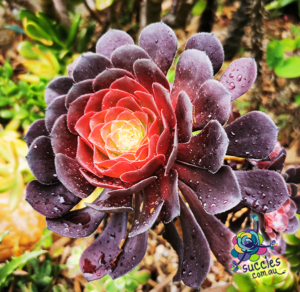
This is a really nicely formed Aeonium, with similar colouring to that of Aeonium Zwartkop. Aeonium Short Black seems to be a more compact hybrid
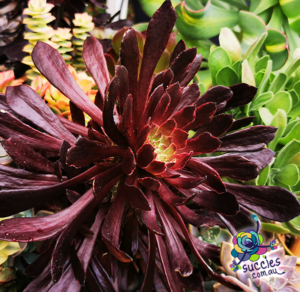
This Aeonium is simply gorgeous! I purchased this specimen through my local Bunnings for a steal, I think it was something like $8.95…BARGAIN! Some believe
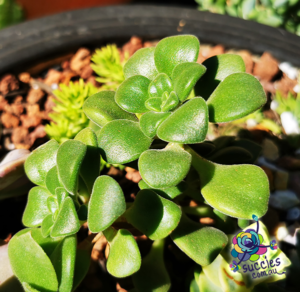
This Aeonium is on the smaller side when it comes to rosettes, growing up to only around 9cm in diameter, the plant itself can grow

A revision on ‘Aeonium Sunburst’ Starburst is a beautiful large Aeonium growing up to 50cm in diameter (10cm larger than Sunburst). More ‘lime’ than ‘lemon’
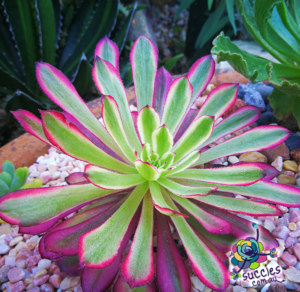
Aeonium Mardi Gras has to be one of the most showy Aeoniums out there. It is named after the colourful ‘Mardi Gras’ festival for its



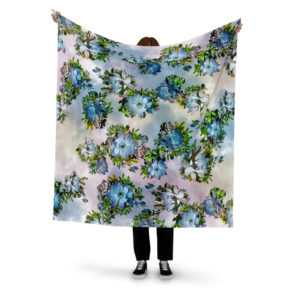
© All rights reserved